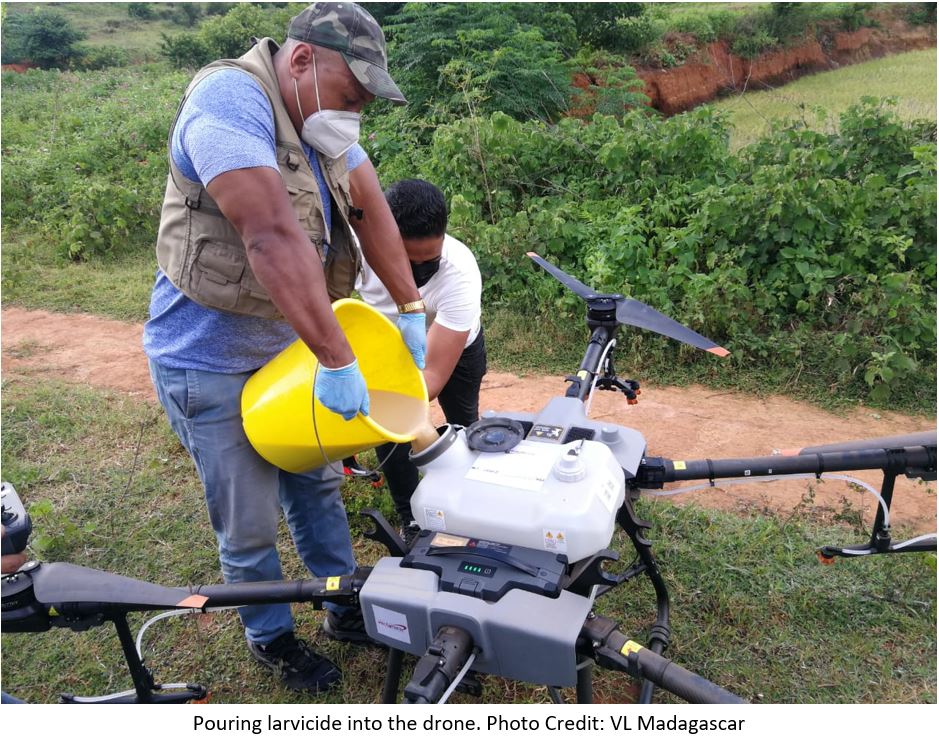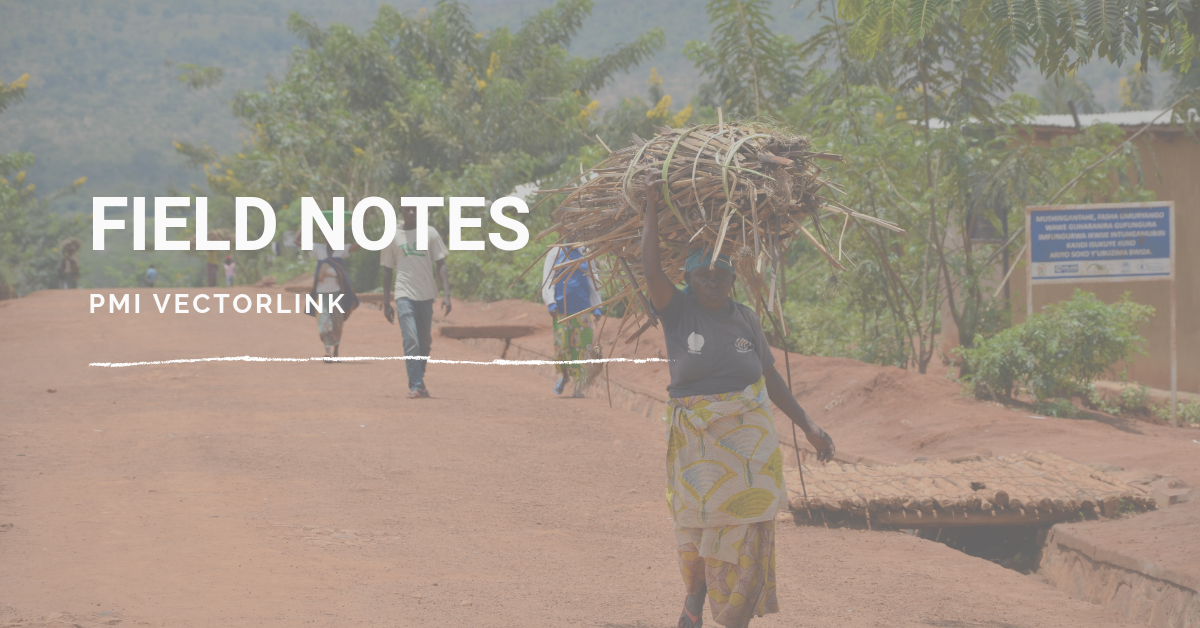The fight to end malaria requires innovation. This week’s Fist Bump goes out to VectorLink Madagascar for their use of drones to spray rice fields with larvicide.
The objectives of this initiative are to assess larval source management (LSM) as a complementary vector control intervention to ITNs in Madagascar, to see if complementary LSM in combination with ITNS provide more protection from malaria vectors, and to see if LSM decreases malaria transmission.

The larviciding is taking place via drone in two districts with high incidents of malaria, Morombe and Ankazobe, where rice fields are common habitats for mosquito larvae. It will occur twice a month for 5 months. Two different drones were used for this operation: the smaller DJI Phantom 4 Pro drones for the mapping of the intervention areas, and the DJI Agras® T30 drones for the application of larvicide onto the rice fields. The drones for larviciding can carry up to 30L of larvicide, covering two hectares.
Entomological monitoring indicators like the density of adult mosquitos, human biting rates, larval density, and sporozoite rates will determine the effectiveness of LSM along with epidemiological monitoring and logistics and cost-effectiveness surrounding LSM in Madagascar.
The operation was not without its challenges. A cyclone in Madagascar delayed the start of the operation due to inaccessible roads and a collapsed bridge, leading to the field sites. Nevertheless, the team was able to resume its activities, and now they are in the middle of their LSM operation.
Congratulations on utilizing drone technology for malaria prevention, VL Madagascar! Keep up the great work.


